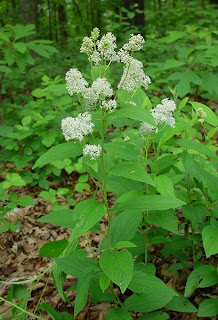CALENDULA

Latin Name: Calendula officinalis
Alternate Names: Pot Marigold
Family: ASTERACEAE
Parts Used: Flowers.
Properties: Alterative, Antifungal, Anti-inflammatory, Antiseptic, Antispasmodic, Astringent, Diaphoretic, Vulnerary, Sedative.
Internal Uses: Candida, Cervicitis, Chickenpox, Conjunctivitis, Glandular Swelling, Hemorrhoids, Herpes, Infection, Measles, Mumps, Ulcers, Yeast Infection
Internal Applications: Tea, Tincture, capsules.
It increases peripheral circulation. Use for old infections that have been trapped in the body for a long time. There is an old saying -- Where Calendula is, no pus will form.
It increases peripheral circulation. Use for old infections that have been trapped in the body for a long time. There is an old saying -- Where Calendula is, no pus will form.
Topical Uses: Earaches, Hemorrhoids, Inflammation, Insect Bites, Sinusitis, Wounds
Topical Applications: Poultice or salve for wounds and insect bites. Used in skin creams for its nourishing and anti-inflammatory properties. Nasal wash for sinus infections. Oil is used to treat earaches. Sitz bath for hemorrhoids.
Culinary uses: Petals have been used as a substitute for saffron.
Energetics: Pungent, Dry, Cool.
Chemical Constituents: Saponins, caretonoids, flavonoids, mucilage, bitter principle, phytosterols, polysaccharides resin.
Comments: The name is derived from calend, meaning the first day of every calendar month as Calendula opens as the sun rises and can be found blooming in some parts of the world every month. In the twelfth century, it was believed that simply looking at Calendula would improve eyesight. Despite the name Pot Marigold, Calendula is not a true Marigold.

